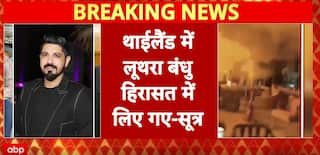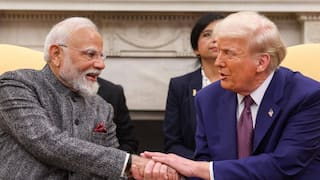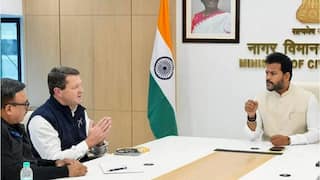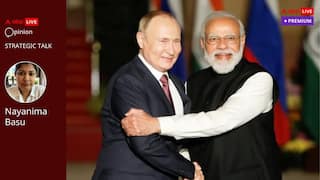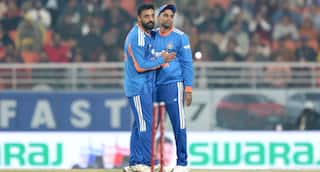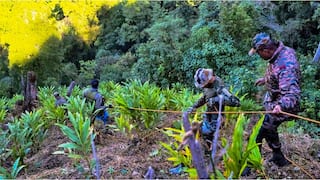Four Years Of India-China Clash At Galwan, Tensions Remain High Till This Day
The Galwan clash was one of the worst skirmishes in 45 years. As Saturday marks 4 years since the violent clash took place, we look back at the series of events that led to the June 15 clash.

Four years have passed since the violent clash between Indian and Chinese soldiers in Ladakh's Galwan Valley, yet the border standoff remains unresolved despite numerous military and diplomatic engagements. The Narendra Modi government, now in its third term, faces a complex situation as China remains steadfast in its position.
On the intervening night of June 15-16, 2020, a physical clash in Galwan Valley between the Indian Army and the People's Liberation Army in Eastern Ladakh resulted in the deaths of 20 Indian soldiers, including a Colonel. The clash was the first violent incident resulting in bloodshed since 1975 when for the first time shots were fired at the Line of Actual Control (LAC). As today marks four years since the violent clash took place, ABP Live takes a look back at the series of events that led to the June 15 clash.
What Happened On June 15, 2020? A Timeline Of The Galwan Clash
Tensions had been high at the LAC in eastern Ladakh since April 2020 as China began to mobilise a large number of troops at the border breaking the existing border protocols that existed between both countries. According to the Indian government, by amassing a huge number of troops China sought to enter the Indian side of the LAC taking away some of the key patrolling points of the Indian Army on the Kailash Range. China claimed that it had lost four of its soldiers in the clash, although India claimed that China suffered at least 43 casualties. China's main motive behind this violent act was to unilaterally change the status quo at the LAC, according to India.
On June 17, Prime Minister Narendra Modi addressed the nation on the India-China border tensions and stated, "India wants peace. But on provocation, India will give a befitting reply".
A meeting between Corps Commanders of the Indian and Chinese armies concluded with a "mutual consensus to disengage" on June 16. However, no plan was drawn up, and subsequent meetings and diplomatic talks resulted in a stalemate.
Subsequently, both sides engaged in high-level talks and while the standoff still continues, incidents like Galwan have been largely avoided. In September 2020 External Affairs Minister S. Jaishankar went to Moscow for the Russia-India-China (RIC) trilateral meeting even as memories of Galwan were afresh in the mind of Indians. India had lost one of its most decorated soldiers, Col. Bikumalia Santosh Babu who was posted there from Bihar Regiment. He was awarded Maha Vir Chakra posthumously.
In Moscow, Jaishankar and his Chinese counterpart of that time, Wang Yi, who is still their foreign minister, agreed to a five-point plan to ease border tensions. It was also agreed upon between both sides that a new set of confidence-building measures (CBMs) would be discussed, but nothing moved so far. However, since then the Working Mechanism for Consultation and Coordination (WMCC) talks as well as discussions at the level of military commanders have continued.
Regular engagement and exchange of talks on both sides resulted in the creation of buffer zones between the two armies and that continues to the status to this day even as the Indian Army has lost patrolling rights in some of the areas which it used to carry out before April 2020. Meanwhile, a year-end review by the Defence Ministry stated that China used "unorthodox weapons" at Galwan.
In February 2021, China publicly clarified for the first time that five Chinese military officers and soldiers were killed in the eastern Ladakh clash, which was vehemently denied by India. Interestingly, despite escalating tensions in the border, China sought business as usual with India even as New Delhi took a series of steps it had been resorting to since June 2020 to ban Chinese apps across all platforms in India, which rattled Beijing. In fact, before the standoff began, around the middle of April 2020 India had put stringent measures to slow down Chinese investments into India, which upset the Xi Jinping administration. Beijing had also been upset with India due to the revocation of Article 370 and 35A.
India continues to remain firm on its stance that there cannot be business as usual with China till restoration of the status quo ante, with troops returning to their positions before the faceoff began in May 2020. The Chinese foreign ministry even claimed that the Galwan River Valley lies on their side of the LAC so they have patrolling rights there and not the Indian Army. Tensions again resumed in September 2020 when China blamed Indian troops for firing warning shots in the Pangong Tso area.
However, the first major breakthrough in talks came in February 2021 when China's Defence Ministry announced that Chinese and Indian troops on the southern and northern shores of Pangong Tso began "synchronised and organised disengagement". The agreement followed the consensus reached between Corps Commanders during the ninth round of military talks on January 24.
"The Chinese and Indian frontline troops at the southern and northern bank of the Pangong Tso Lake start synchronised and organised disengagement from February 10," said a readout from China, while Defence Minister Rajnath Singh said, "There are still some outstanding issues that remain regarding deployment and patrolling on LAC," and mentioned that "our attention will be on these in further discussions."
Apart from the north and south banks of Pangong Tso, other friction points include PP15 in Hot Springs, PP17A in the Gogra Post area, PP14 in Galwan Valley, and the Depsang Plains in the far north. In Depsang Plain, Chinese troops had blocked Indian soldiers at a place called the Bottleneck preventing them from accessing their traditional patrolling points PP10, PP11, PP11A, PP12, and PP13.
Following the disengagement at Pangong Tso, the then Army Chief M.M. Naravane stated on May 19, "With no transgressions happening and no violations of this disengagement, I think the trust has built up".
The idea was to begin the process of “phased disengagement” which was first discussed in July 2020 when from the Chinese side a call was set up between National Security Adviser Ajit Doval and Chinese Foreign Minister and State Councillor Wang Yi.
READ | LAC Standoff: No Resolution Of ‘Remaining Issues’ Yet After 19 Rounds Of India-China Talks
Aftermath Of Galwan Clash
Four years since the Galwan clash bilateral ties between India and China continue to remain tepid. In September 2023, when India hosted the G-20 Summit for the first time, Chinese President Xi did not attend the meeting and dispatched his Premier Li Qiang instead.
Besides, since 2020 there have been no bilateral talks that have taken place between Modi and Xi. The last time the two leaders were seen shaking hands with each other and exchanging pleasantries was during the G20 Summit in Bali, Indonesia in 2022.
In May this year, after a gap of 18 months, China finally appointed an envoy to India, Xu Feihong, who has expressed his willingness to take forward bilateral ties. “I will make my due contribution to the improvement and development of China-India relations,” said Xu.
ALSO READ AT ABP LIVE | Troops Deployment Will Continue Unless Status Quo Ante Achieved With China: Army Chief Gen Pande












